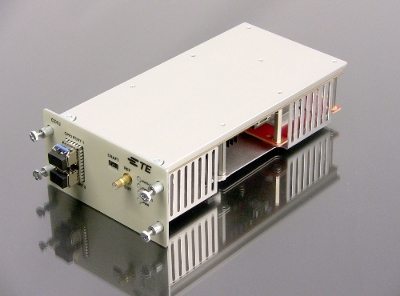When Alcatel-Lucent and TE Connectivity forged a partnership for digital distributed antenna systems, TE Connectivity was the world’s No. 2 provider of DAS equipment, and Alcatel-Lucent was the world’s No. 5 vendor of wireless network gear. Now TE Connectivity’s wireless unit is set to become part of the world’s largest DAS vendor, CommScope, and Alcatel-Lucent is merging with Nokia to become the world’s largest equipment maker, based on sales estimates from IDC Research.
ABI Research analyst Nick Marshall expects CommScope and TE Connectivity to dominate the DAS market once they join forces. TE Connectivity said its digital DAS solution will be able to address a much larger number of platforms once the merger with CommScope is complete. The next big win for the company could be convincing Nokia to open its radio interface the way Alcatel-Lucent has.
The Alcatel-Lucent/TE partnership
Alcatel-Lucent provides interoperability support for TE’s DAS unit via a plug-in card. The companies have developed interoperability between the Alcatel-Lucent baseband unit and TE’s digital DAS at the common public radio interface.
CPRI is an interface that has been used for years to connect baseband processing units to remote radio heads. TE Connectivity has brought CPRI to DAS, eliminating much of the hardware needed in traditional DAS installations.
“We have really mimicked something that has been done for the core network and we have taken it closer to the end user in, for example, public venues,” explained TE Connectivity’s Boris Golubovic, director of product management. The approach has won strong support from AT&T’s antenna solutions group, which is encouraging all its DAS vendors to adopt the CPRI interface.
Traditional DAS uses radio heads that are designed for much larger installations and can produce 10 watts of power or more. “That is way too much RF power to put into a system that is used to drive an indoor DAS,” said Golubovic. “That power needs to be dropped or combined in a way that is useful.”
“Hardware used to connect traditional DAS systems with the radio head … is very power consuming, because it is really used to reduce the power that comes out of a radio head and dump it into the air,” Golubovic explained. “As such it adds additional cost associated with cooling.” That cost can be eliminated by using the CPRI interface, as can the cost of the additional hardware and the space needed to support it.
Multiband, multioperator
The direct connection to the radio head supports multiple spectrum bands, meaning that remote radios can serve more than one operator, or they can support multiple bands for one operator.
“It’s a little bit of a choice,” said Golubovic. “Some [operators] choose to start by themselves, but generally if the equipment will be used by multiple operators, more than one are there at the very beginning with some joining later. … The economics of a shared infrastructure piece of equipment comes from having more parties on it.”
Operators are likely to further explore shared infrastructure as they use centralized head-ends to serve outdoor distributed antenna systems and small cell installations. DAS equipment that is central office compliant may have an advantage here, as Golubovic explains in the conversation below:

